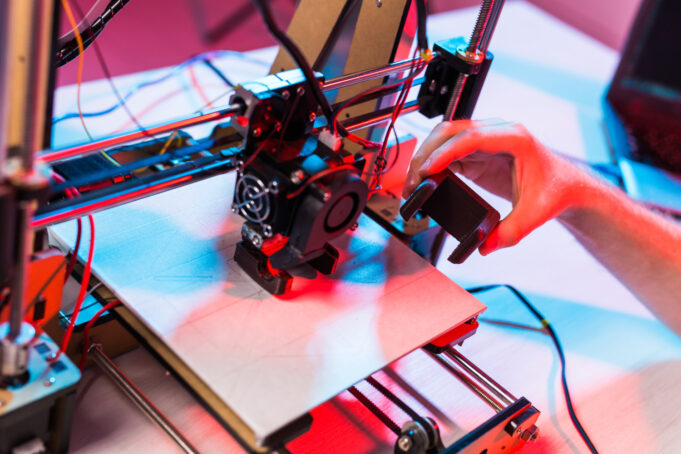Pioneering research led by the Water Industry Printfrastructure project is demonstrating the immense potential of 3D printing to create a more resilient, sustainable, and cost-effective approach to global water infrastructure. Their groundbreaking research shows 3D printing can offer:
- Reduced Costs and Improved Efficiency: 3D printing offers significant cost savings (up to 20%) and faster project turnaround times compared to traditional construction methods. This translates to real dollars saved and minimized disruption to critical water treatment operations.
- On-Demand Parts Printing: The ability to print replacement parts locally addresses challenges related to equipment availability, delivery delays, and supplier dependence. Imagine a scenario where a malfunctioning component can be quickly replicated on-site, minimizing downtime and ensuring smooth operations.
- Environmental Benefits: The project reports a 25% reduction in carbon footprint due to less material usage and a smaller construction footprint. With growing concerns about climate change, 3D printing offers a compelling solution for building a more sustainable water infrastructure ecosystem.
- Customizable Solutions: 3D printing allows for the creation of bespoke components tailored to specific needs, enhancing functionality and efficiency. Consider the possibility of designing and printing custom filter elements or intricate piping configurations to optimize water treatment processes.
Project Highlights
The Printfrastructure project, a collaboration between United Utilities, Scottish Water, ChangeMaker3D, and Manchester Metropolitan University’s PrintCity, has achieved several groundbreaking milestones:
- Successful printing of polymer replacement parts for everyday operations at United Utilities, including wastewater jet nozzles, CCTV components, and water monitoring instrument troughs. This demonstrates the real-world applicability of 3D printing for essential components within water treatment facilities.
- Establishment of a temporary 3D concrete printing hub at United Utilities’ wastewater treatment works, showcasing the printing of infrastructure elements like combined sewer overflow chambers and containment walls. This signifies a significant step towards utilizing 3D printing for larger-scale infrastructure projects within the water sector.
Industry Impact and Future Potential
The upcoming United Utilities: Creating Green Infrastructure with Water Industry Printfrastructure webinar on November 28th promises to be a valuable learning experience. Here’s what you can expect:
- Insights on the project’s findings from polymer and concrete 3D printing studies. Gain valuable knowledge on the practical considerations and potential applications of both printing methods within water treatment facilities.
- Research on the social and commercial viability of 3D printing in the water sector. Explore the economic benefits, potential job creation, and broader societal impact of adopting 3D printing on a wider scale.
- Discussions on scaling up this technology for wider industry adoption. Learn about the strategies and considerations for integrating 3D printing into existing workflows and infrastructure development plans.
Beyond the Headlines
This project goes beyond simply showcasing the technical feasibility of 3D printing in water infrastructure. It paves the way for a paradigm shift in how water treatment facilities are designed, built, and maintained:
- Embracing Innovation: Water treatment professionals are facing increasing pressure to ensure water security while minimizing environmental impact and operating within budget constraints. 3D printing offers a compelling solution by:
- Reducing reliance on traditional construction methods that can be resource-intensive and disruptive. Imagine constructing new chambers or replacing pipes with a smaller environmental footprint and less disruption to surrounding areas.
- Empowering on-site teams to quickly address maintenance needs with readily available printed parts. This can lead to faster response times, improved efficiency, and reduced reliance on external contractors.
- Facilitating the creation of sustainable infrastructure with a smaller environmental footprint. 3D printing can potentially use less material and create less waste compared to traditional methods.
- Early adopters like United Utilities and Scottish Water are demonstrating leadership in exploring this innovative technology. Their insights will be crucial in helping the entire water treatment industry navigate the exciting possibilities of 3D printing.
A New Era of Water Infrastructure
The Water Industry Printfrastructure project is ushering in a new era of water infrastructure, one characterized by innovation, sustainability, and efficiency. By harnessing the power of 3D printing, the water sector could revolutionize how it designs, builds, and maintains its critical assets.





